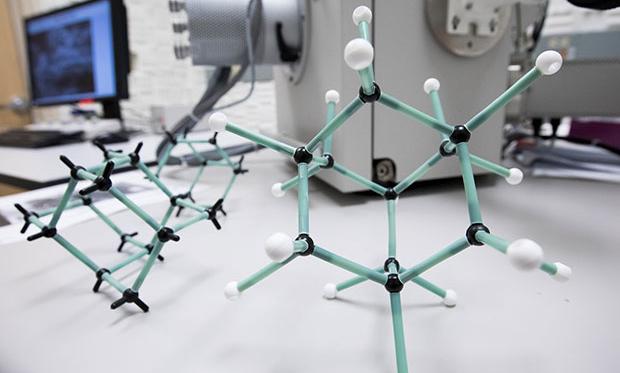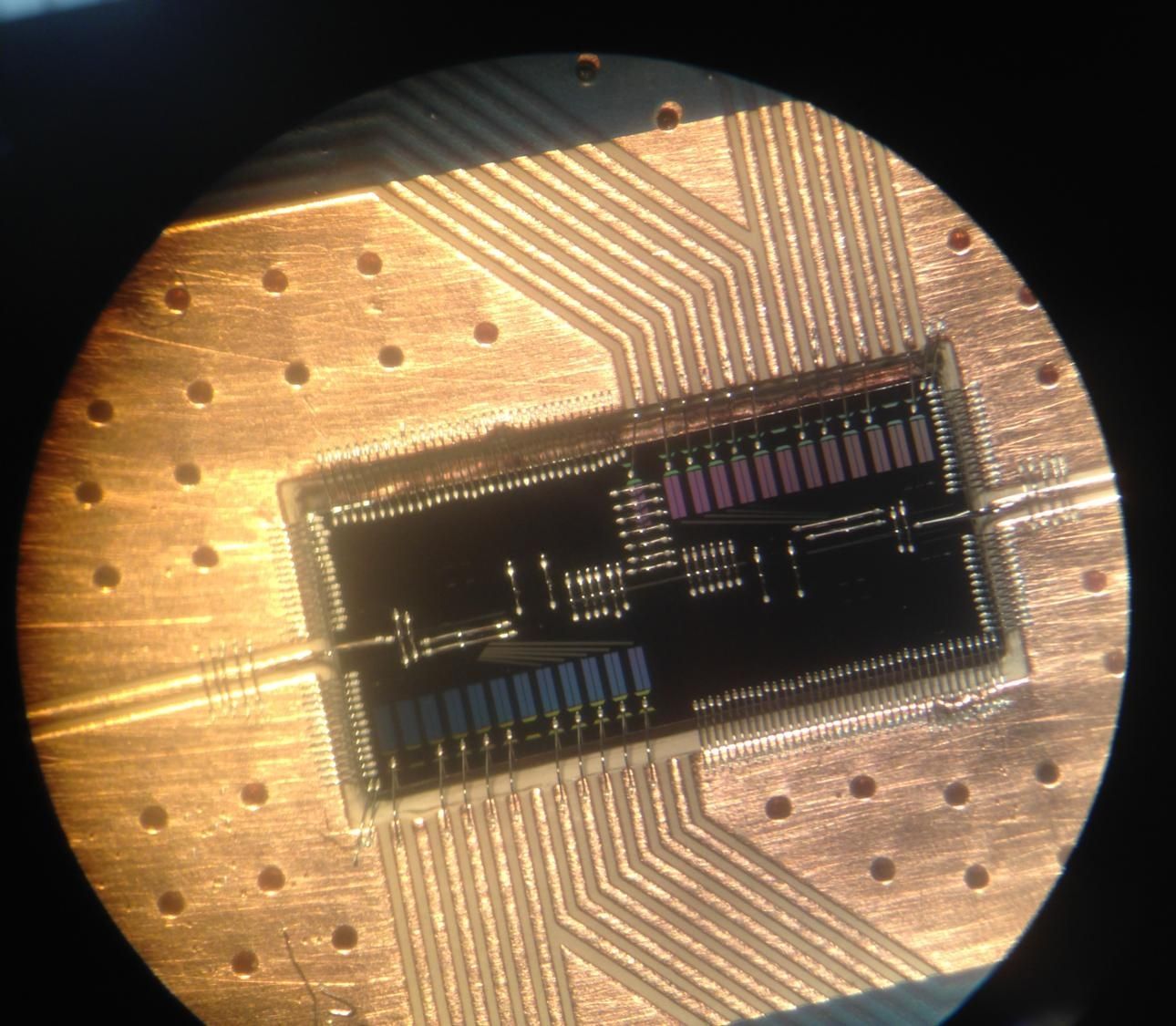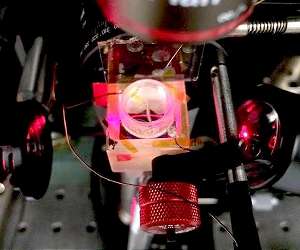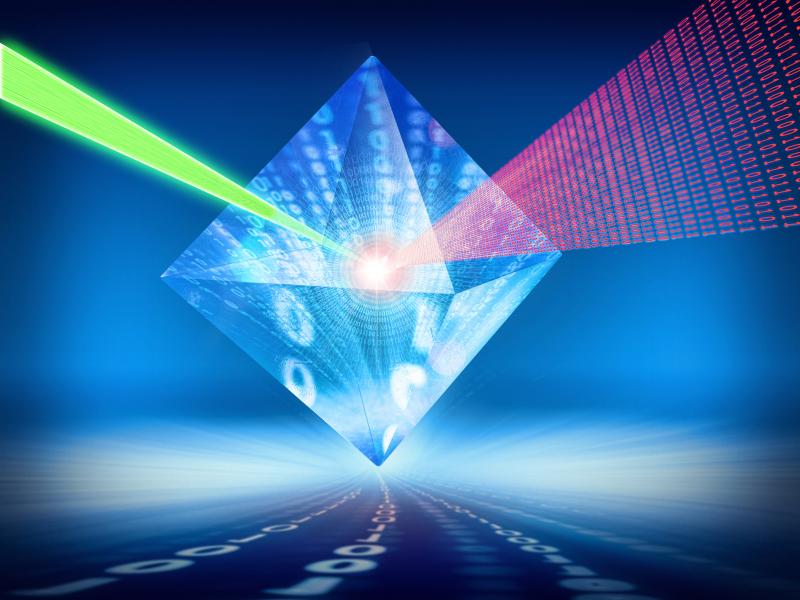Archive for the ‘particle physics’ category: Page 489
Dec 25, 2016
Physicists Achieve Quantum Teleportation of Photon Over 25 Kilometers
Posted by Karen Hurst in categories: particle physics, quantum physics
For the first time, a team of physicists have successfully teleported a quantum state of a photon to a crystal over 25 kilometers away through a fiber optic cable. This effectively showed that the photon’s quantum state, not its composition, is important to the teleportation process. The team was led by Nicolas Gisin of the University of Geneva and the results were published in the journal Nature Photonics. With this new paper, Gisin’s team has successfully squashed the previous record they set a decade ago by teleporting a quantum state of a proton 6 kilometers.
The quantum state of the photon is able to preserve information under extreme conditions, including the difference between traveling as light or becoming stored in the crystal like matter. The photon’s state acts as information that can be teleported along great distances using the optical fiber, and can be stored within the crystal. This was achieved due to a phenomenon in quantum mechanics known as entanglement, where two particles have a correlation, despite the fact that they aren’t touching and transmitting information to one another.
To test this and ensure what they were observing was actually happening, one photon was stored in a crystal while the other was sent along optical fiber, over a distance of 25 kilometers. The photon that was sent along the optical fiber collides with a third photon, which was assumed to destroy them both. However, the information from the first photon was transferred to the third photon in the collision, like the transfer of energy when one billiard ball hits another. The information from the third photon came back to the crystal where it could be measured to ensure the information was preserved between the first and the second.
Dec 25, 2016
The Edge of Physics: Do Gravitons Really Exist?
Posted by Karen Hurst in categories: particle physics, quantum physics
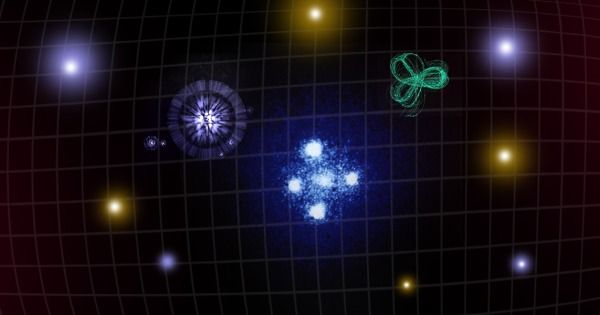
Einstein’s theory of relativity described gravity as the distortion of space and time—which bend and stretch based on the masses of objects within them as well as the energy released from the phenomena. A few years later however, we gained awareness of the confusing world of quantum physics as physicists discovered the existence of very small particles—which were later found to affect even the biggest, most powerful phenomena in the universe.
This led to the discovery of force-carrier particles, or bosons, behind three of the fundamental forces governing the universe: the electromagnetic field has photons, the strong nuclear force has gluons, and the weak force is carried by W and Z bosons. This leaves gravity out. Physicists hypothesize that, if the other three fundamental forces have a corresponding quantum theory, there must be a particle behind gravity too.
Continue reading “The Edge of Physics: Do Gravitons Really Exist?” »
Dec 25, 2016
Jülich Installs New QPACE3 Supercomputer for Quantum Chromodynamics
Posted by Karen Hurst in categories: augmented reality, cosmology, particle physics, quantum physics, robotics/AI, supercomputing
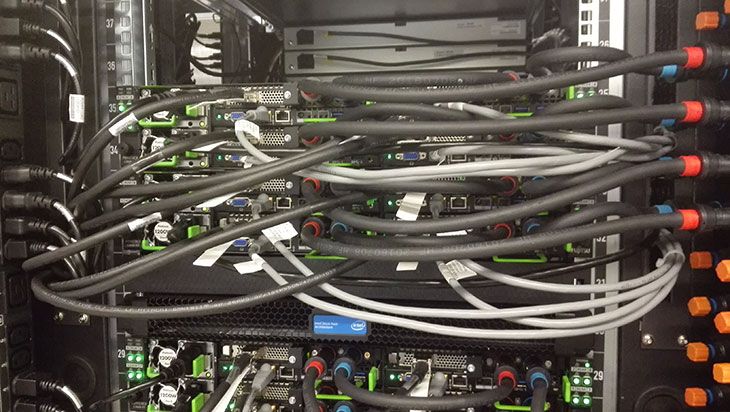 A new supercomputer has been deployed at the Jülich Supercomputing Center (JSC) in Germany. Called QPACE3, the new 447 Teraflop machine is named for “QCD Parallel Computing on the Cell.”
A new supercomputer has been deployed at the Jülich Supercomputing Center (JSC) in Germany. Called QPACE3, the new 447 Teraflop machine is named for “QCD Parallel Computing on the Cell.”
QPACE3 is being used by the University of Regensburg for a joint research project with the University of Wuppertal and the Jülich Supercomputing Center for numerical simulations of quantum chromodynamics (QCD), which is one of the fundamental theories of elementary particle physics. Such simulations serve, among other things, to understand the state of the universe shortly after the Big Bang, for which a very high computing power is required.
The demand for high performance computers to solve complex applications has risen exponentially, but unfortunately so has their consumption of power. Many supercomputers require more than a megawatt of electricity to operate and annual electricity costs can easily run into millions of Euros. The energy supply is therefore a significant part of the operating costs of a data center. According to recent analyst studies, this represents the second-largest factor in addition to personnel and maintenance costs. The upcoming boom with (3D) video streaming, augmented reality, image recognition and artificial intelligence is driving up the demand for data center capabilities, thereby placing new challenges in the power supply sector.
Dec 23, 2016
NASA Goddard: “All Galaxies are Embedded Within a Vast Sphere of Black Holes” (Holiday Feature)
Posted by Andreas Matt in categories: cosmology, particle physics
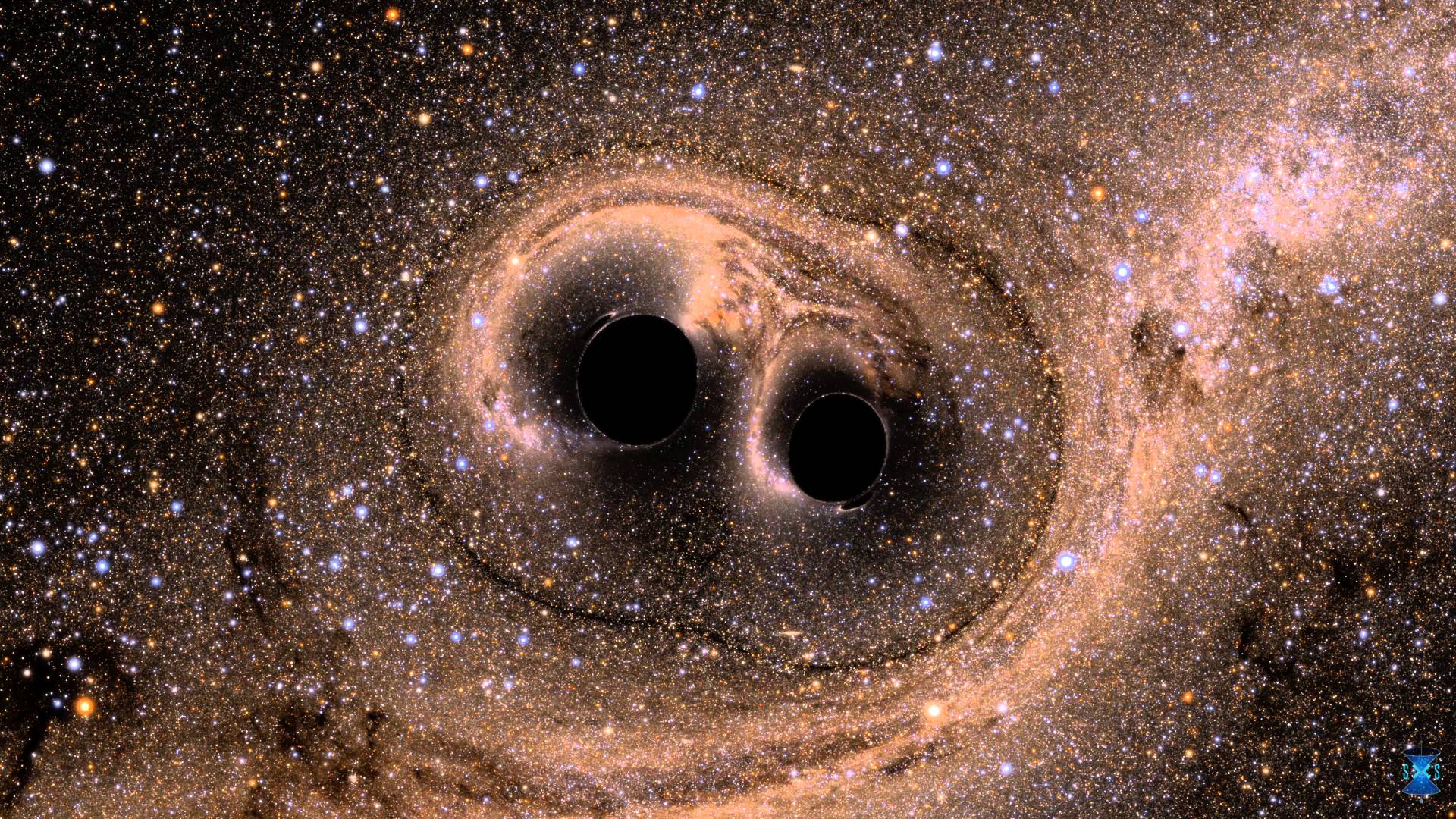
Dark matter is a mysterious substance composing most of the material universe, now widely thought to be some form of massive exotic particle. An intriguing alternative view is that dark matter is made of black holes formed during the first second of our universe’s existence, known as primordial black holes.
Dec 22, 2016
The world’s first demonstration of spintronics-based artificial intelligence
Posted by Karen Hurst in categories: particle physics, robotics/AI
Excellent.
Researchers at Tohoku University have, for the first time, successfully demonstrated the basic operation of spintronics-based artificial intelligence.
Artificial intelligence, which emulates the information processing function of the brain that can quickly execute complex and complicated tasks such as image recognition and weather prediction, has attracted growing attention and has already been partly put to practical use.
Continue reading “The world’s first demonstration of spintronics-based artificial intelligence” »
Dec 22, 2016
Electron-photon small-talk could have big impact on quantum computing
Posted by Karen Hurst in categories: computing, employment, particle physics, quantum physics
In a step that brings silicon-based quantum computers closer to reality, researchers at Princeton University have built a device in which a single electron can pass its quantum information to a particle of light. The particle of light, or photon, can then act as a messenger to carry the information to other electrons, creating connections that form the circuits of a quantum computer.
The research, published in the journal Science and conducted at Princeton and HRL Laboratories in Malibu, California, represents a more than five-year effort to build a robust capability for an electron to talk to a photon, said Jason Petta, a Princeton professor of physics.
“Just like in human interactions, to have good communication a number of things need to work out—it helps to speak the same language and so forth,” Petta said. “We are able to bring the energy of the electronic state into resonance with the light particle, so that the two can talk to each other.”
Continue reading “Electron-photon small-talk could have big impact on quantum computing” »
Dec 21, 2016
The perfect Christmas gift? A nanoscale snowman
Posted by Karen Hurst in categories: evolution, food, nanotechnology, particle physics
Happy Holidays; happy end of the year, happy launch of next year, happy snow days, happy hot chocolate day, etc. Nonetheless, my gift to you this year is a Nanoscale Snowman.
Would a jewel-encrusted snowman make the perfect Christmas present? At only 5 nanometres in size, the price might be lower than you think. And it’s functional too, catalysing the splitting of water to make green hydrogen for fuel cells.
The nanoparticle, as imaged with the aberration-corrected scanning transmission electron microscopes, features eyes, nose and mouth of precious-metal platinum clusters embedded in a titanium dioxide face. Each platinum cluster typically contains 30 platinum atoms; within the whole nanoparticle there are approximately 1680 titanium atoms and 180 platinum atoms.
Continue reading “The perfect Christmas gift? A nanoscale snowman” »
Dec 21, 2016
Electrical signaling in heart and nerve cells using graphene
Posted by Karen Hurst in categories: biotech/medical, particle physics, robotics/AI
Nice.
Scientists have enlisted the exotic properties of graphene, a one-atom-thick layer of carbon, to function like the film of an incredibly sensitive camera system in visually mapping tiny electric fields in a liquid. Researchers hope the new method will allow more extensive and precise imaging of the electrical signaling networks in our hearts and brains.
The ability to visually depict the strength and motion of very faint electrical fields could also aid in the development of so-called lab-on-a-chip devices that use very small quantities of fluids on a microchip-like platform to diagnose disease or aid in drug development, for example, or that automate a range of other biological and chemical analyses. The setup could potentially be adapted for sensing or trapping specific chemicals, too, and for studies of light-based electronics (a field known as optoelectronics).
Continue reading “Electrical signaling in heart and nerve cells using graphene” »
Dec 21, 2016
Q&A: Diamond in Quantum Applications
Posted by Karen Hurst in categories: computing, engineering, particle physics, quantum physics
Oh; there is a LOT more to they syndiamond story as it relates to some of the additional hardware and communications technologies that we’re developing and planning for the future.
What are the unique properties of diamond that make it a supermaterial?
Diamond has long been known to have exceptional properties, largely resulting from the symmetry of the cubic lattice made of light carbon atoms connected by extremely strong bonds. These exceptional properties include thermal conductivity five times higher than that of copper and the widest optical transparency of any material extending from the UV to the RF part of the electromagnetic spectrum. Additionally, diamond also has some interesting chemical properties as it is extremely inert, though it can become a conductor by adding boron. In this manner, one could leverage synthetic diamond for use in electrochemical incineration where existing electrode materials have only a limited lifetime.
